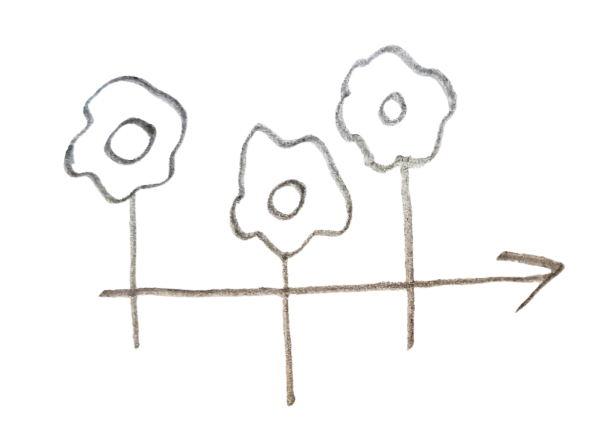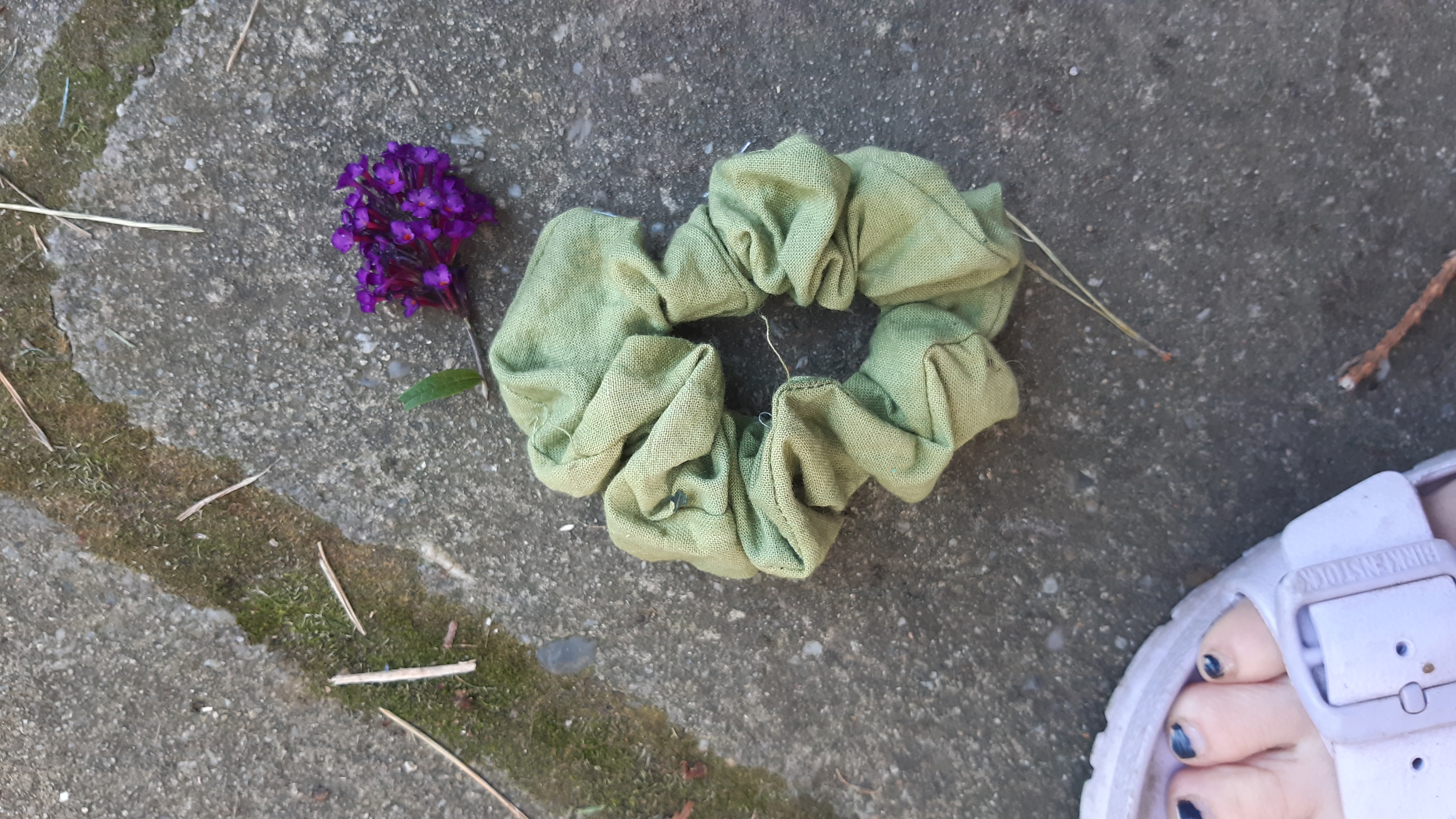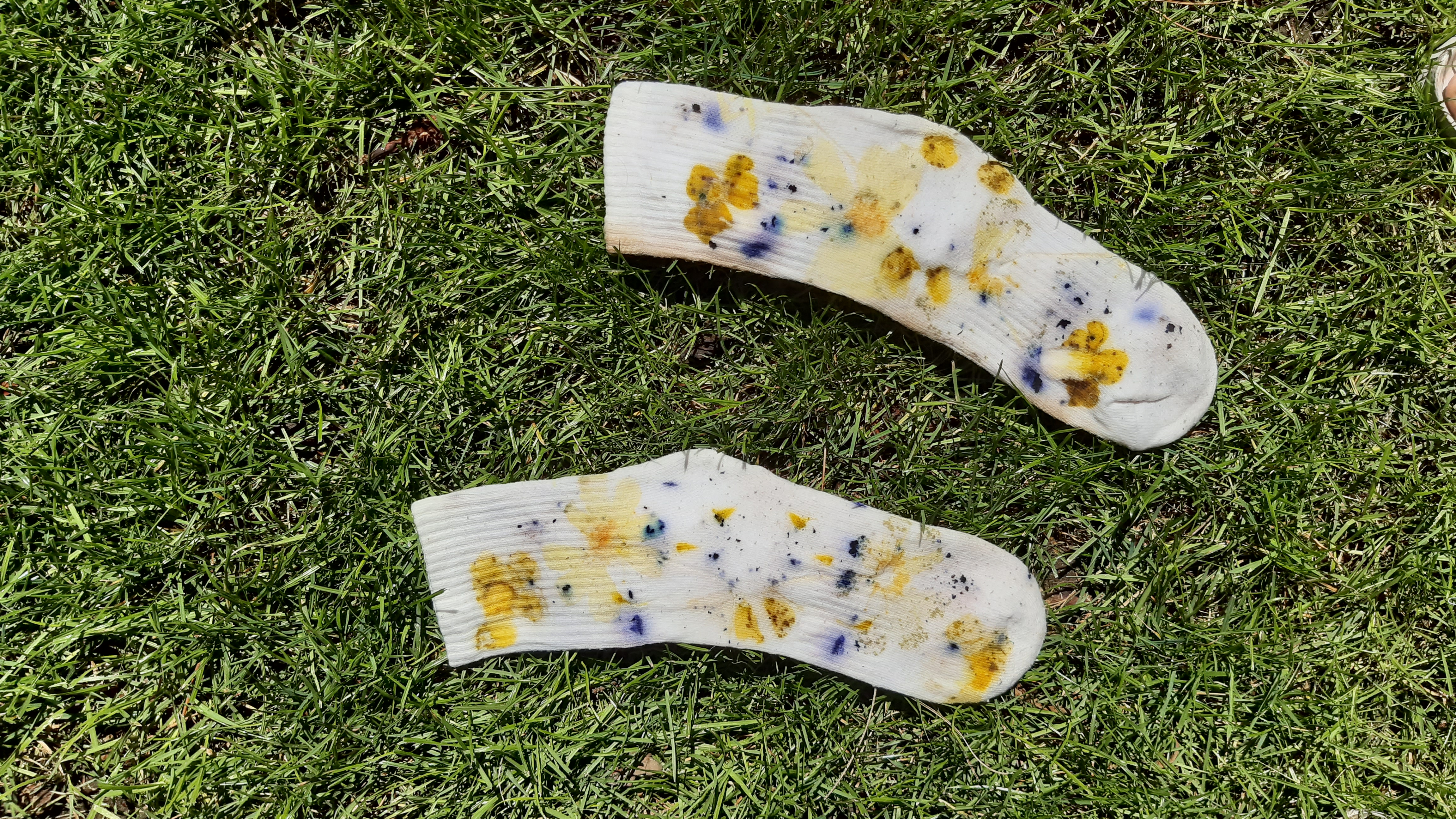Natural dyes

exploring methodologies of how food (waste) and plants can nurture us in different ways ~ not from the inside but from the outside. In a series of fragmented experiments (in Naplaveno 2022, in my parents’ garden over the summers) I’m slowly creating a toolkit of alternative textile production methods, imagining a world where the objects you wear so close to your skin are made with care and carry a piece of the landscape, a story within them. Turning food to color: Imprints of a field on your sleeve, dreams of beans coloring a picnic blanket blue, onion skins painting your napkins golden.
Natural dyeing is a slow and organic process. Going foraging and waiting. The first and maybe most important step is collecting the materials: plants for dyeing and fabrics (plant or animal fibers work the best while synthetics produce poor results. Silk of all fabrics can bring the most vivid results.)There are many different methods, depending on the desired outcome and the material used. The basic principle however remains the same: the collected plants and the fabrics are soaked and simmered in water for a while and left for the night or more days to let the colors sink in. In some cases (e.g. black beans) the food can be used for cooking after soaking. In other cases, the dyeing process requires exactly those parts of the product that otherwise would end up in the compost bin (onion skins, walnut husks, carrot leaves) It is a time-consuming process that comes with a lot of waiting and a lot of magic as the result is always slightly unpredictable, always a little bit out of control. I love the gentle accidentality of it, the way I can never fully predict how a color will turn out, and even the waiting: going to sleep knowing that in the morning I can open yesterday’s bundle. a tiny ritual that truly feels like opening a gift.
Besides the fact that it brings me a lot of joy I’m interested in natural dying because as much as I love working with textiles, I’m deeply aware of the environmental impact of producing them. Dying especially is one of the most polluting parts of the fashion industry. Think of the news of rivers turning pink in India or of the fact that the amount of water used annually by the textile industry, is enough to fill 37 million Olympic swimming pools. Natural dyeing (on a small scale at least) provides an alternative that is 100% reliant on waste/excess plant material and because no toxic chemicals are applied in the process the water can be later used for watering plants etc.
Natural dyeing is a slow and organic process. Going foraging and waiting. The first and maybe most important step is collecting the materials: plants for dyeing and fabrics (plant or animal fibers work the best while synthetics produce poor results. Silk of all fabrics can bring the most vivid results.)There are many different methods, depending on the desired outcome and the material used. The basic principle however remains the same: the collected plants and the fabrics are soaked and simmered in water for a while and left for the night or more days to let the colors sink in. In some cases (e.g. black beans) the food can be used for cooking after soaking. In other cases, the dyeing process requires exactly those parts of the product that otherwise would end up in the compost bin (onion skins, walnut husks, carrot leaves) It is a time-consuming process that comes with a lot of waiting and a lot of magic as the result is always slightly unpredictable, always a little bit out of control. I love the gentle accidentality of it, the way I can never fully predict how a color will turn out, and even the waiting: going to sleep knowing that in the morning I can open yesterday’s bundle. a tiny ritual that truly feels like opening a gift.
Besides the fact that it brings me a lot of joy I’m interested in natural dying because as much as I love working with textiles, I’m deeply aware of the environmental impact of producing them. Dying especially is one of the most polluting parts of the fashion industry. Think of the news of rivers turning pink in India or of the fact that the amount of water used annually by the textile industry, is enough to fill 37 million Olympic swimming pools. Natural dyeing (on a small scale at least) provides an alternative that is 100% reliant on waste/excess plant material and because no toxic chemicals are applied in the process the water can be later used for watering plants etc.

Naplaveno 2023
black bean-blue scarf in Berlin, November 2023
Summer of 2023, 2024























